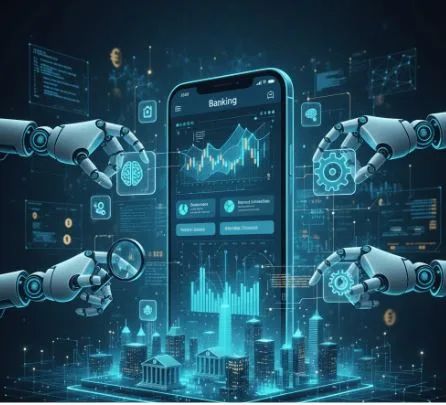QR Code Reader: The Ultimate Guide to Scanning Technology in 2025
In a world that increasingly thrives on digital connectivity, QR code readers have emerged as an essential tool for businesses and consumers alike. From contactless menus in restaurants to ticketless travel, QR code technology has revolutionized how we access information, complete transactions, and interact with the digital realm. But what exactly is a QR code reader, how does it work, and what are its most compelling applications in 2025? This in-depth guide will answer all your questions and more.
What Is a QR Code Reader?
A QR code reader is a software or hardware tool used to scan and decode Quick Response (QR) codes. These codes are two-dimensional barcodes that store data like URLs, text, contact information, and more. Once scanned by a QR code reader—typically using a smartphone or tablet camera—the information is interpreted and displayed or acted upon (e.g., opening a website).
The Evolution of QR Code Technology
Originally developed by Denso Wave, a subsidiary of Toyota, in 1994, QR codes were intended to track automobile parts. Over time, the versatility of these codes led to widespread adoption across multiple industries.
The turning point for QR code usage came during the COVID-19 pandemic, where the demand for touchless interactions surged. Restaurants adopted QR menus, contact tracing used QR codes, and digital payments became QR-based. In 2025, QR codes are more relevant than ever, and the QR code reader is now a built-in feature on nearly every smart device.
Types of QR Code Readers
1. Mobile App-Based Readers
These are downloadable applications for smartphones and tablets. Popular QR code scanner apps include:
- QR Code Reader by Scan
- Kaspersky QR Scanner
- QR & Barcode Scanner by Gamma Play
Many of these apps are free and support both Android and iOS.
2. Built-In Camera Readers
Most modern smartphones now have native QR scanning capabilities:
- iPhones (iOS 11 and above): Open the camera app and point at a QR code.
- Android Devices: Many brands like Samsung, Google Pixel, and Xiaomi offer QR scanning via the default camera.
3. Web-Based QR Code Scanners
Web apps like WebQR allow scanning QR codes using a webcam on laptops or desktops. These are useful for users without mobile access.
4. Desktop Software and API-Based Scanners
For enterprise or developer use, QR code scanning can be integrated via APIs or software tools in warehouse systems, logistics, ticketing software, or customer loyalty platforms.
How a QR Code Reader Works
Understanding how a QR code reader works involves three key steps:
1. Detection
The reader identifies the QR code through a camera. The black and white square patterns, or modules, are recognized as a potential QR code.
2. Alignment
QR codes have three distinct square markers at their corners. The reader uses these to align the code for correct orientation and scale, even if the code is angled or partially damaged.
3. Decoding
The software translates the pattern into binary data and converts it into human-readable content, such as a URL, text message, or file.
Key Features of a Good QR Code Reader
When choosing a QR code reader—whether as an app or integrated into a business solution—consider these features:
- Speed and accuracy: Fast decoding without lag.
- Multiple format support: Can scan QR codes, barcodes, Data Matrix, Aztec codes, etc.
- Security checks: Warns against malicious links or phishing attempts.
- Offline functionality: Some readers allow scanning without internet access.
- Batch scanning: Useful for warehouses or event check-ins.
- Customization: Allows generating and scanning of custom QR codes for branding.
Applications of QR Code Readers in 2025
QR code readers are embedded in everyday life. Here’s how different sectors utilize them:
1. Retail and E-commerce
QR codes link products to digital catalogs, product videos, or discount codes. Shoppers can scan codes for instant checkout or product comparison.
2. Hospitality
Hotels offer QR code check-ins, digital room keys, and restaurant menus. Travelers can access local recommendations via QR-powered tourist maps.
3. Healthcare
QR codes on patient wristbands store medical histories, while pharmacies use them for prescription tracking and refill automation.
4. Education
Teachers share lesson plans or assignments through QR codes. Students scan them to access videos, Google Docs, or interactive platforms.
5. Events and Entertainment
Concert tickets, cinema passes, and sports events all use QR codes for quick entry, reducing paper use and queues.
6. Transportation
Airlines use QR codes for boarding passes. Metro systems have embraced QR-based fare payments using smartphone apps.
Advantages of QR Code Readers
- Contactless Interaction: Minimizes physical touch and boosts hygiene.
- Speed and Convenience: Instantly redirects users without typing long URLs.
- Cost-Effective: No hardware required—just a smartphone.
- Environmentally Friendly: Reduces the need for paper-based materials.
- Versatile Usage: Adaptable for marketing, payments, education, logistics, and more.
QR Code Reader Security: Risks and How to Stay Safe
Though QR codes are generally safe, malicious actors can embed phishing links or malware downloads. Here are some safety tips:
- Use a trusted QR code reader with built-in security features.
- Preview links before clicking. Some apps allow URL inspection.
- Avoid scanning random QR codes found in public places or on unsolicited messages.
- Keep your device secure with antivirus software and system updates.
Security-focused QR code readers like Kaspersky QR Scanner warn users about potentially harmful content.
Creating Your Own QR Code: Bonus Tip
Many QR code readers double as QR code generators. You can create your own code for:
- Wi-Fi access
- Business cards (vCard)
- Social media profiles
- Payment links
- Event RSVPs
The Future of QR Code Readers
With the rise of augmented reality (AR) and Internet of Things (IoT), QR code readers are becoming even more powerful:
1. Integration with Smart Glasses
Devices like Apple Vision Pro or Meta’s AR glasses may use visual QR detection for real-time information overlays.
2. Blockchain and Crypto Integration
Cryptocurrency wallets use QR code readers to scan wallet addresses or authorize payments securely.
3. Voice-Controlled Scanning
As virtual assistants improve, voice-activated QR scanning could become the norm for accessibility.
4. AI-Powered QR Recognition
Machine learning can enhance QR code detection in complex environments like low lighting or motion blur.
How Businesses Can Leverage QR Code Readers
If you’re a business owner, here’s how to benefit from QR code technology:
- Improve user engagement: Add QR codes to product packaging for how-to videos or user manuals.
- Streamline logistics: Use QR codes for inventory management and tracking.
- Boost marketing efforts: QR codes can lead customers to landing pages, social media campaigns, or review platforms.
- Enable digital payments: Pair with platforms like PayPal, Stripe, or Square for QR-based payments.
QR Code Reader Apps to Try in 2025
Here are some top-rated apps (iOS and Android) for scanning QR codes:
| App Name | Platform | Features |
| Scan – QR Code and Barcode Reader | iOS, Android | Simple, ad-free, fast |
| Kaspersky QR Scanner | iOS, Android | Secure, URL preview |
| NeoReader | iOS, Android | Reads all 2D codes |
| Google Lens | iOS, Android | Built-in, supports translation and search |
| QR Code Reader by Scan | iOS | Popular with millions of downloads |
Conclusion
The QR code reader is no longer just a niche tool—it’s a daily utility that bridges the physical and digital world. Whether you’re using it to read a restaurant menu, access medical records, or complete a payment, the QR code reader has become a powerful enabler of modern life.
In 2025 and beyond, expect QR code readers to become even smarter, faster, and more integrated into the technologies we use every day. From augmented reality to blockchain, QR scanning is set to play a major role in shaping the digital interactions of tomorrow.
Final Thoughts
As QR code usage continues to evolve, the role of the QR code reader will only expand. Whether you’re a tech enthusiast, small business owner, or everyday consumer, understanding and utilizing QR code readers is no longer optional—it’s essential.
Want to stay ahead? Download a trusted QR code reader app today and unlock a world of convenience at your fingertips.





